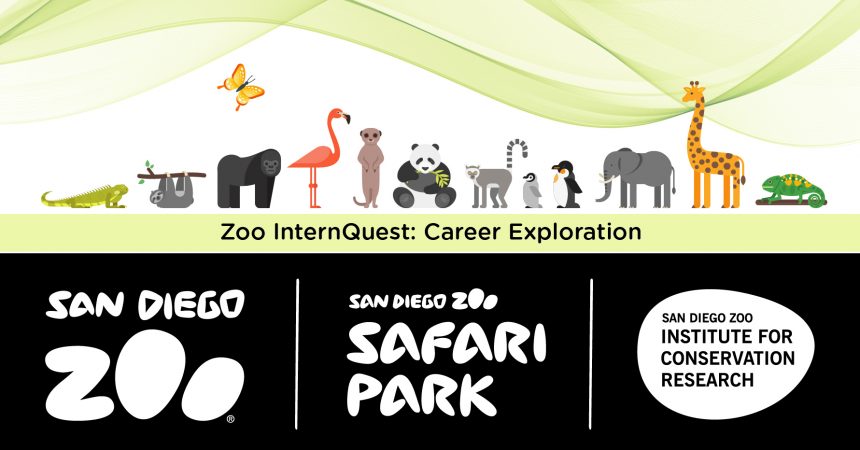Zoo InternQuest is a seven-week career exploration program for San Diego County high school juniors and seniors. Students have the unique opportunity to meet professionals working for the San Diego Zoo, Safari Park, and Institute for Conservation Research, learn about their jobs, and then blog about their experience online. Follow their adventures here on the Zoo’s website!
 Just like your pets at home need to see a vet, the animals in the Zoo’s collections need to do so as well. However, veterinary medicine for the variety of animals at the Zoo can be a bit different from that for your dog or cat. We had the opportunity to meet Louden Wright, resident veterinarian at the Zoo’s hospital, to learn more about veterinary medicine for exotic animals.
Just like your pets at home need to see a vet, the animals in the Zoo’s collections need to do so as well. However, veterinary medicine for the variety of animals at the Zoo can be a bit different from that for your dog or cat. We had the opportunity to meet Louden Wright, resident veterinarian at the Zoo’s hospital, to learn more about veterinary medicine for exotic animals.
In order to accommodate the variety of animals at the Zoo, the hospital has a variety of enclosures for a wide array of scenarios. The enclosures are styled to the type of animal they house, for example a gorilla would be kept in an enclosure with much thicker, sturdier mesh than a bird. Hoofstock, such as gazelles, are kept in larger dirt-based stalls, since it is easier for them to walk on dirt than on hard ground. Enclosures are also designed to help with veterinary care. One example of this is a squeeze chute, which an animal walks through, but the sides of the chute can be moved to secure the animal. This helps restrain the animal so that small procedures such as giving vaccines can be done safely.
Working with Zoo animals also presents some unique challenges. Some animals at the Zoo are very social, which raises the question of whether or not they need a buddy to stay with them at the hospital. Dr. Wright explained that this is determined on a case-by-case basis, but typically social animals staying for a short time can do so without a companion, while those that need to be at the hospital for longer will usually need one. He also mentioned that medications to decrease an animal’s anxiety can also be used in this situation when deemed absolutely necessary.
Another challenge Dr. Wright discussed was determining what vaccines an animal should receive. Every time a vaccine is given, there is a risk of the animal having an adverse reaction to it, which is also common with our domestic pets like cats and dogs. Unlike dogs and cats, there aren’t a lot of each species kept in a Zoo, so there isn’t always very much known about how they may react to a vaccine. Often, the Zoo will contact other zoos throughout the country and around the world to get more information on the care of various species. Thus, vaccines are given based on the animal’s risk of actually encountering the disease and their risk of having an adverse reaction to it.
Veterinarians play a key role in the reintroduction of animals into the wild. Dr. Wright emphasized the importance of introducing healthy, adequately prepared animals into the wild. He explained that preparation varies by animal, so, as an example, a Puerto Rican crested toad can pretty much just be released back into its natural habitat, but a California condor needs some extra preparation before it can be introduced into the wild population so it can learn essential skills such as hunting. To ensure that healthy animals are introduced, vets develop vaccine programs and disease assessments for them.
Overall, while both vets for domestic and zoo animals work to keep animals healthy, their jobs can be very different. The variety of species kept at the San Diego Zoo creates several unique challenges from determining how an animal should be housed in a hospital setting to what vaccines they receive. Zoo vets also greatly help reintroduction projects by ensuring that the animals released are both healthy and sufficiently prepared for life in the wild. While their jobs may be different, zoo vets have the same goals as vets for domestic animals: to maintain animal health and well-being.
Kelsey, Real World Team
Week Six, Fall Session 2018


